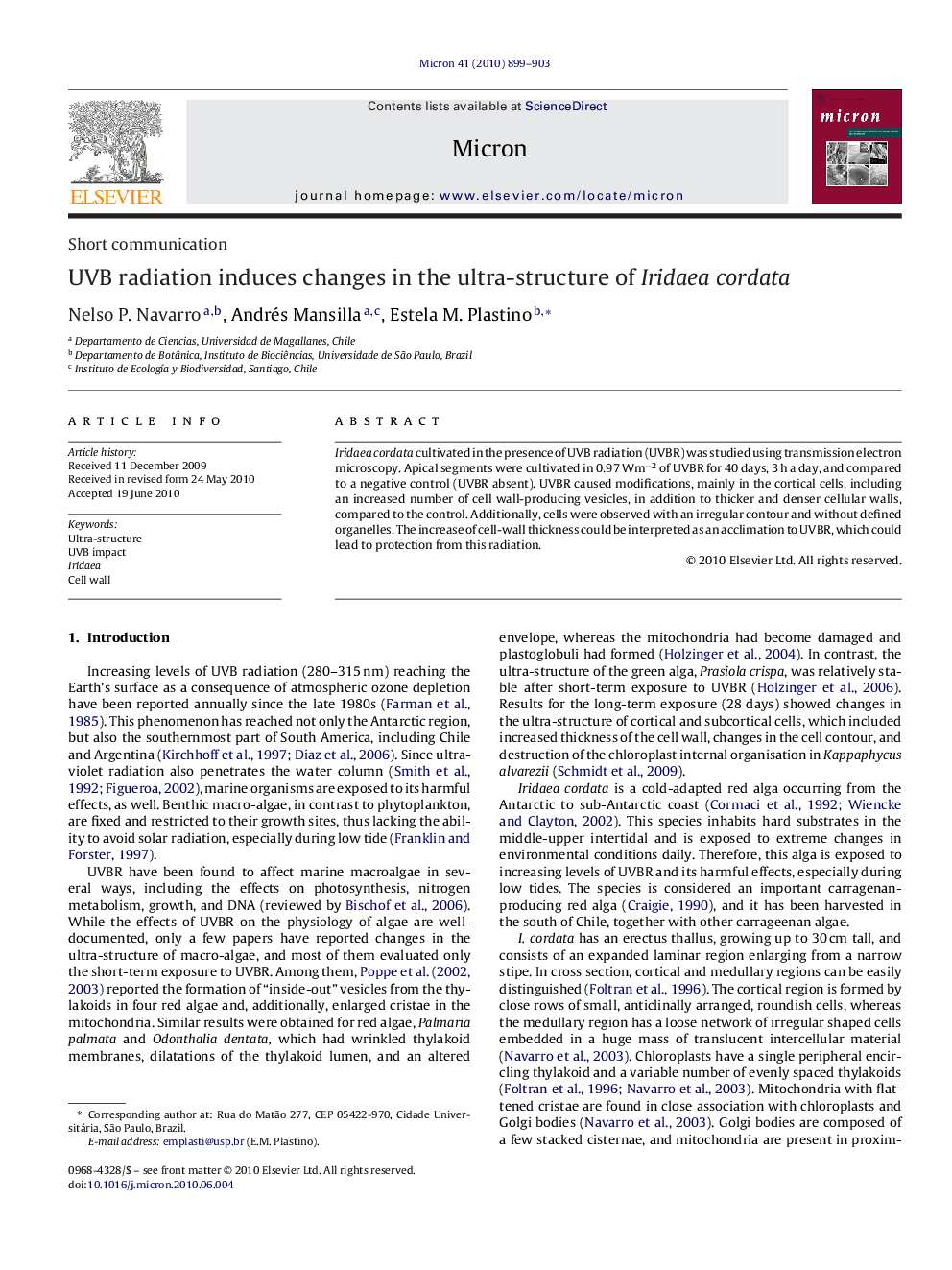| Article ID | Journal | Published Year | Pages | File Type |
|---|---|---|---|---|
| 1589648 | Micron | 2010 | 5 Pages |
Abstract
Iridaea cordata cultivated in the presence of UVB radiation (UVBR) was studied using transmission electron microscopy. Apical segments were cultivated in 0.97 Wm−2 of UVBR for 40 days, 3 h a day, and compared to a negative control (UVBR absent). UVBR caused modifications, mainly in the cortical cells, including an increased number of cell wall-producing vesicles, in addition to thicker and denser cellular walls, compared to the control. Additionally, cells were observed with an irregular contour and without defined organelles. The increase of cell-wall thickness could be interpreted as an acclimation to UVBR, which could lead to protection from this radiation.
Keywords
Related Topics
Physical Sciences and Engineering
Materials Science
Materials Science (General)
Authors
Nelso P. Navarro, Andrés Mansilla, Estela M. Plastino,
